The cope is significant for the embroidered ophrey (long panel adorning the entire front edge of the vestment) which was worked by Sisters of the St Dominic’s community in North Adelaide, South Australia, in the late 19th century.
The panel is embroidered with depictions of eight Saints flanking a central crest, with each Saint set in front of an intricate landscape, bordered with decorative floral and iconographic imagery. The intricate embroidery is a testimony to the Sisters exceptional skills in figurative and silk shading needlework.
The bright colours and integrity of the fibres have fortunately been preserved over time; however, the silk jacquard used for the body of the cope was extensively split due to inherent properties in the silk (which was likely weighted with metal salts at the time of production).
The orchid pattern worked through the jacquard is uncharacteristic of such religious vestments which typically feature more Anglo-Saxon floral imagery, like the Tudor rose pattern seen on the silk edging of the same cope. This initially drew Artlab’s Textiles conservators to assume the body was a later addition. The idea of replacing the split textile was discussed, however further investigation of the cope’s structure suggested the orchid-adorned jacquard was in fact original to the object.
Major treatment was undertaken with a view to make the cope displayable on a suitable form in the small Museum at St Dominic’s Priory College (now a Catholic girls’ school in North Adelaide). This involved applying a full silk crêpeline lining using conservation-grade adhesive. The adhesive was first painted out onto the support, and once cured to a film with a slight tack, applied and set to the back of the cope. An additional sheer nylon net overlay was dyed to match and stitched on top of the lined jacquard with fine mono-filament thread to provide additional support during display.
The treatment was successful in that it enabled the cope to be displayed draped over a form. The lining provides the body the support required to prevent any further mechanical damage to the previously chemically weakened fibres and hinders further splitting occurring as a result of inherent properties
in the silk.
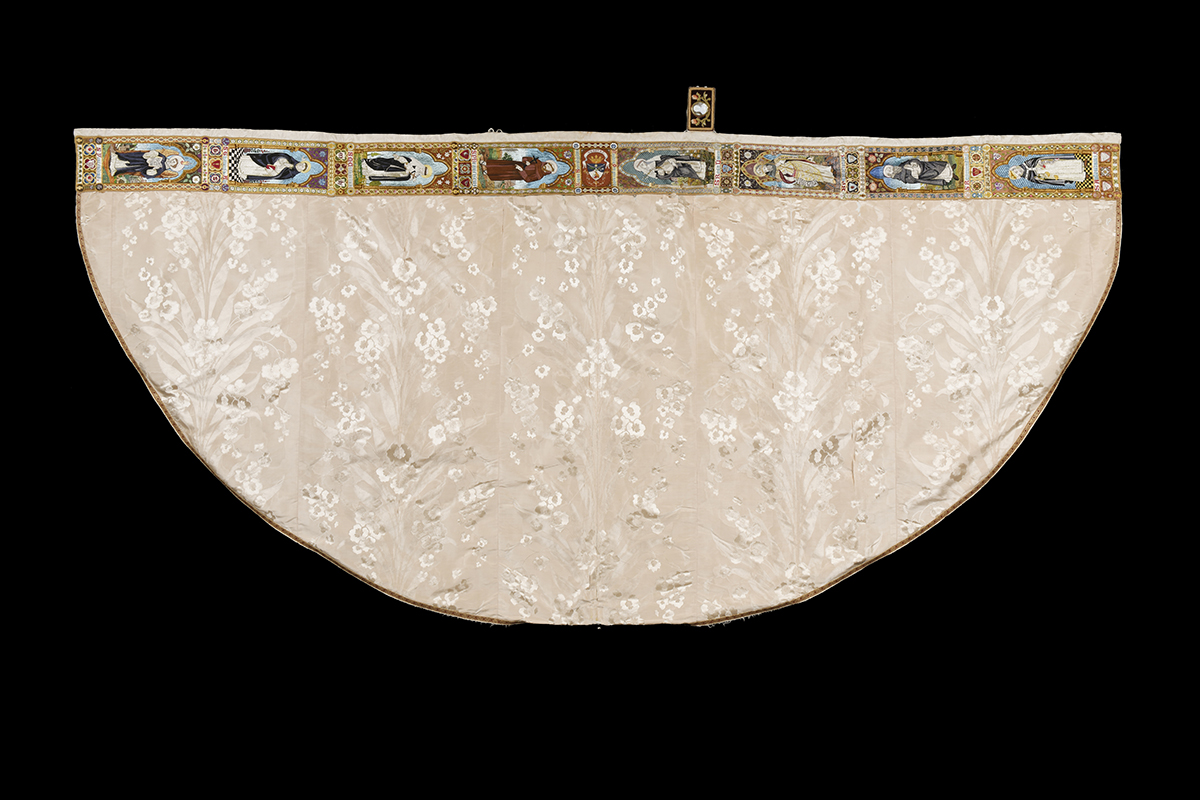 Cope with embroidered ophrey, before conservation treatment by Artlab’s Textiles Conservators.
Cope with embroidered ophrey, before conservation treatment by Artlab’s Textiles Conservators.
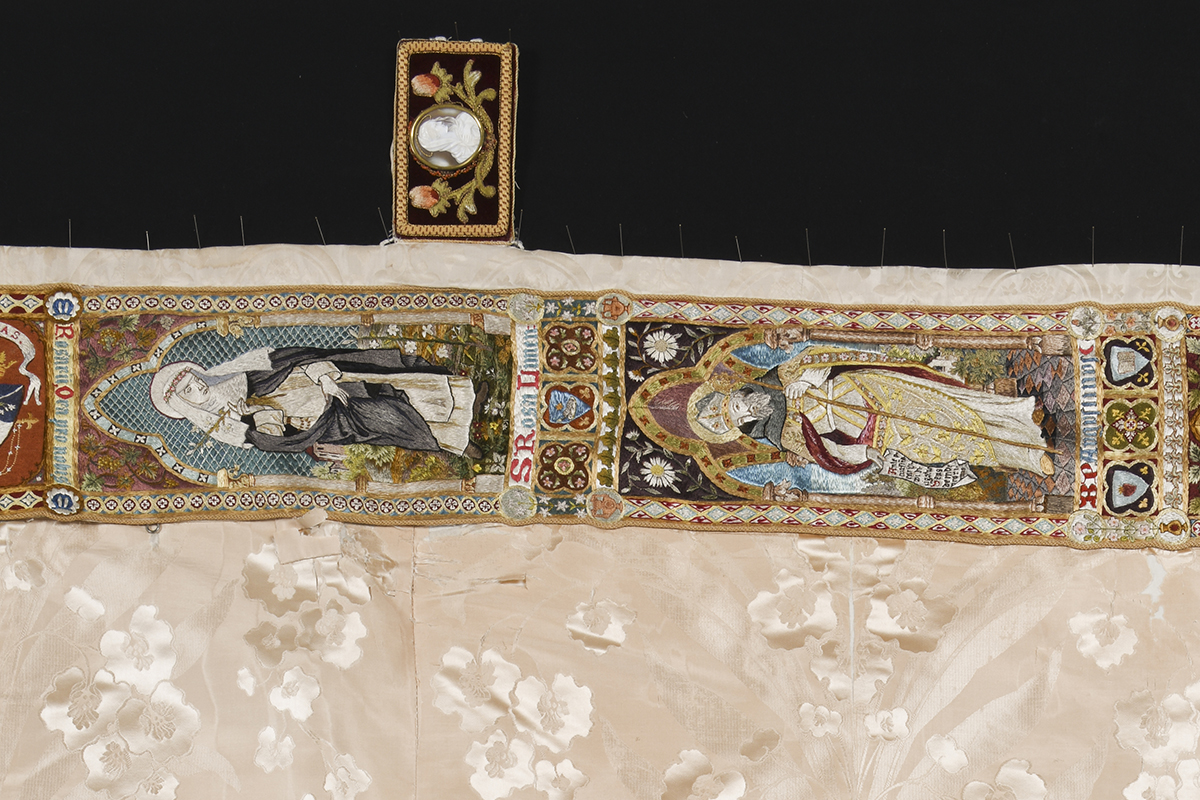 Image above and below: detail of embroidered section, before treatment, with degradation of the silk visible.
Image above and below: detail of embroidered section, before treatment, with degradation of the silk visible.
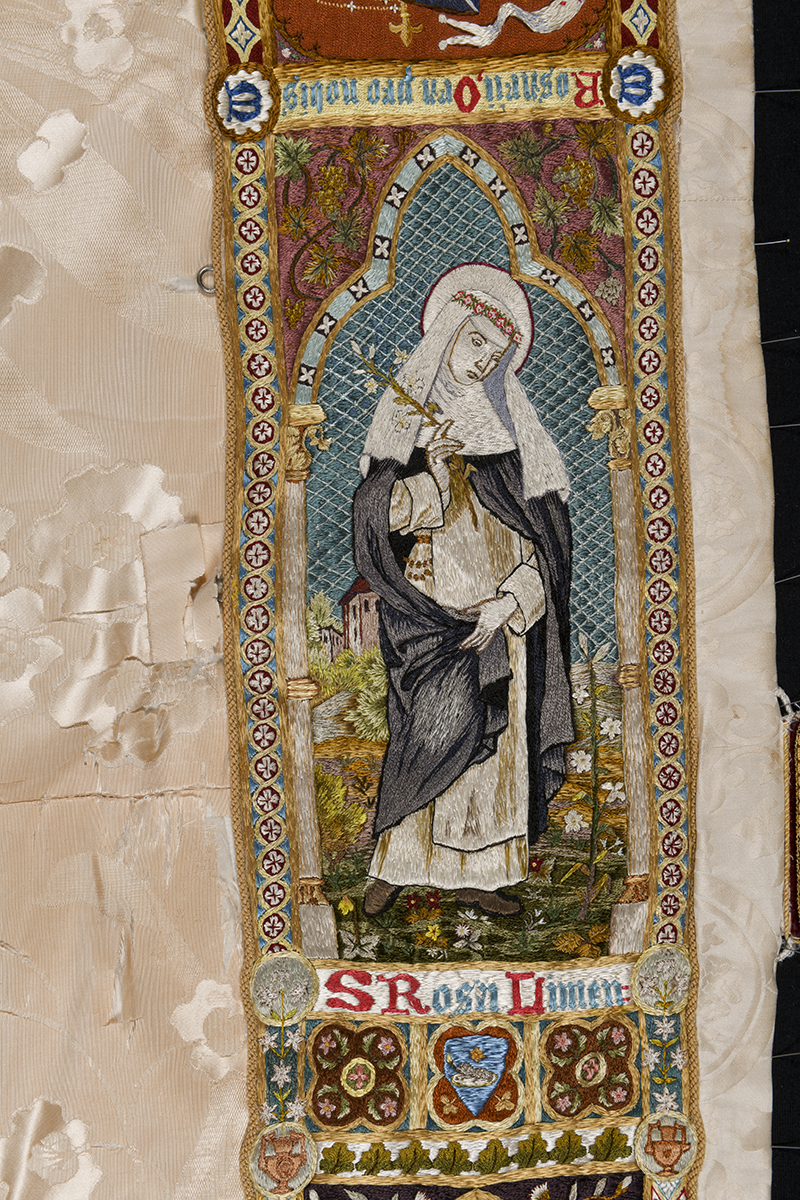
 Victoria Thomas, Artlab's Textiles Conservator, removing old repairs from the cope.
Victoria Thomas, Artlab's Textiles Conservator, removing old repairs from the cope.
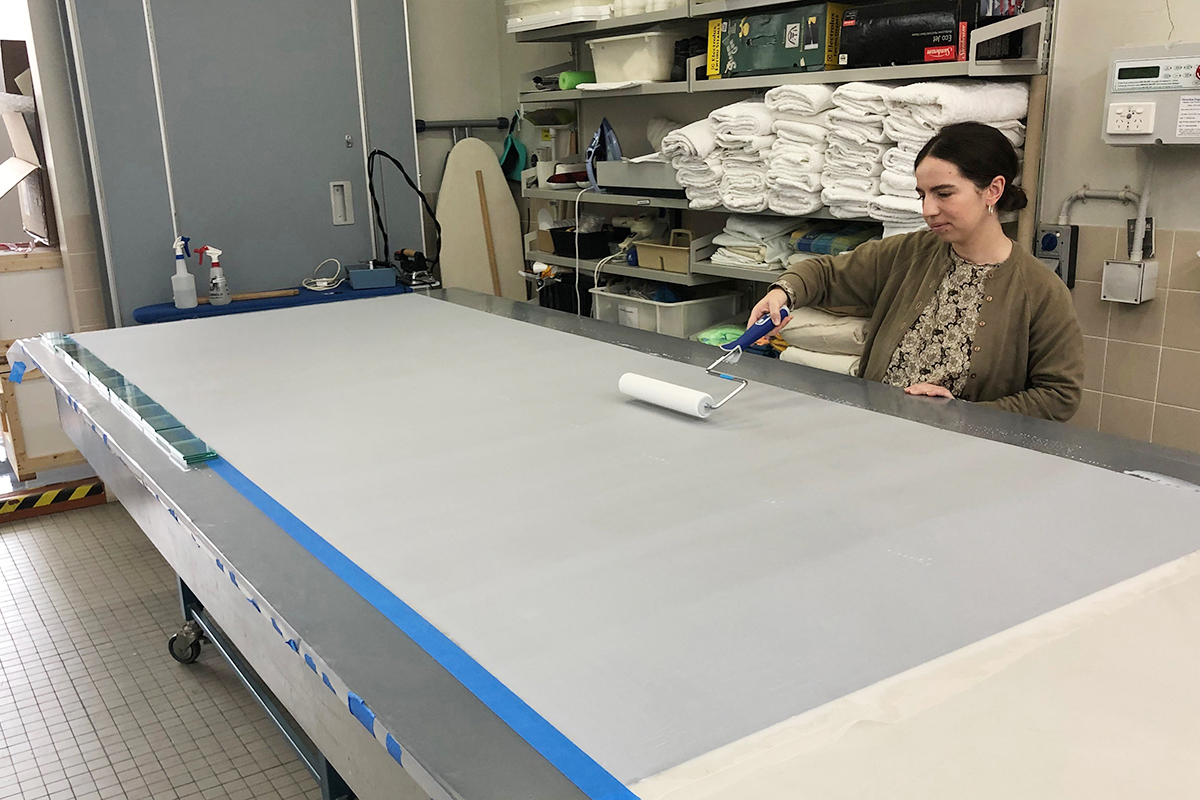 Applying adhesive to the lining.
Applying adhesive to the lining.
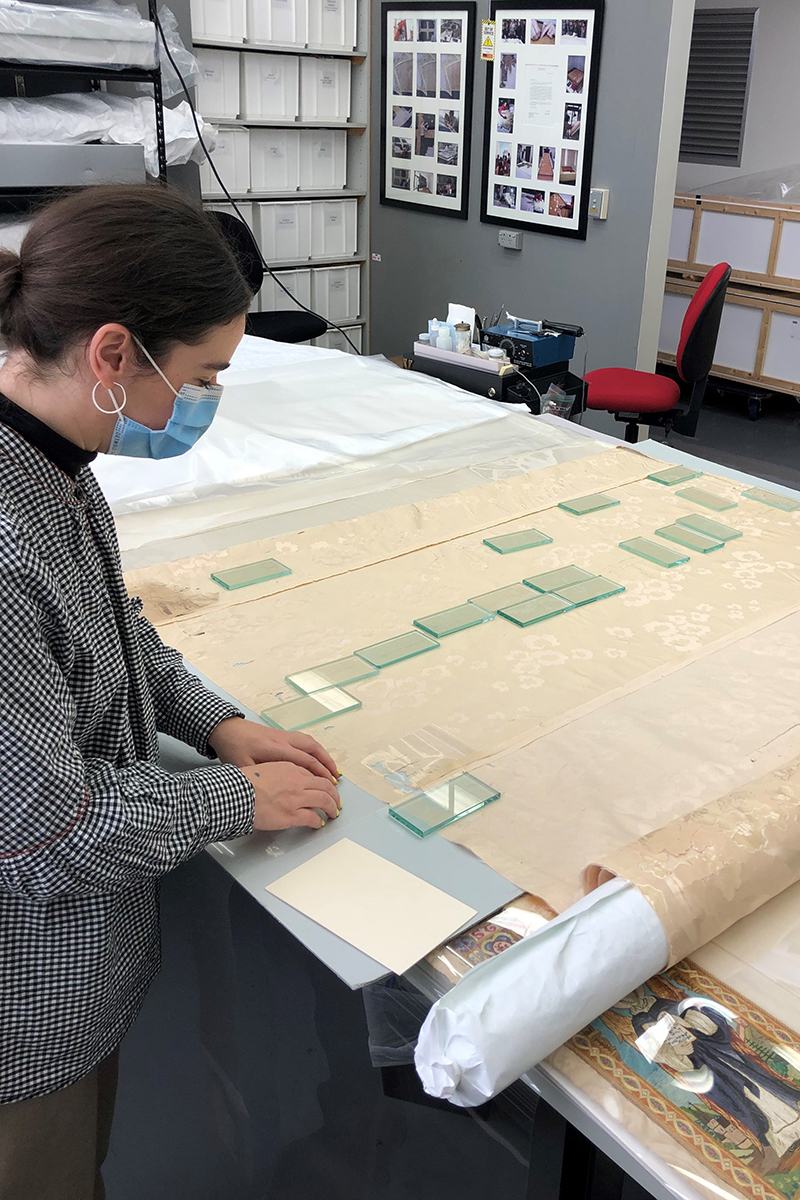 Adhesive lining alignment.
Adhesive lining alignment.
Victoria applying the lining to the cope.
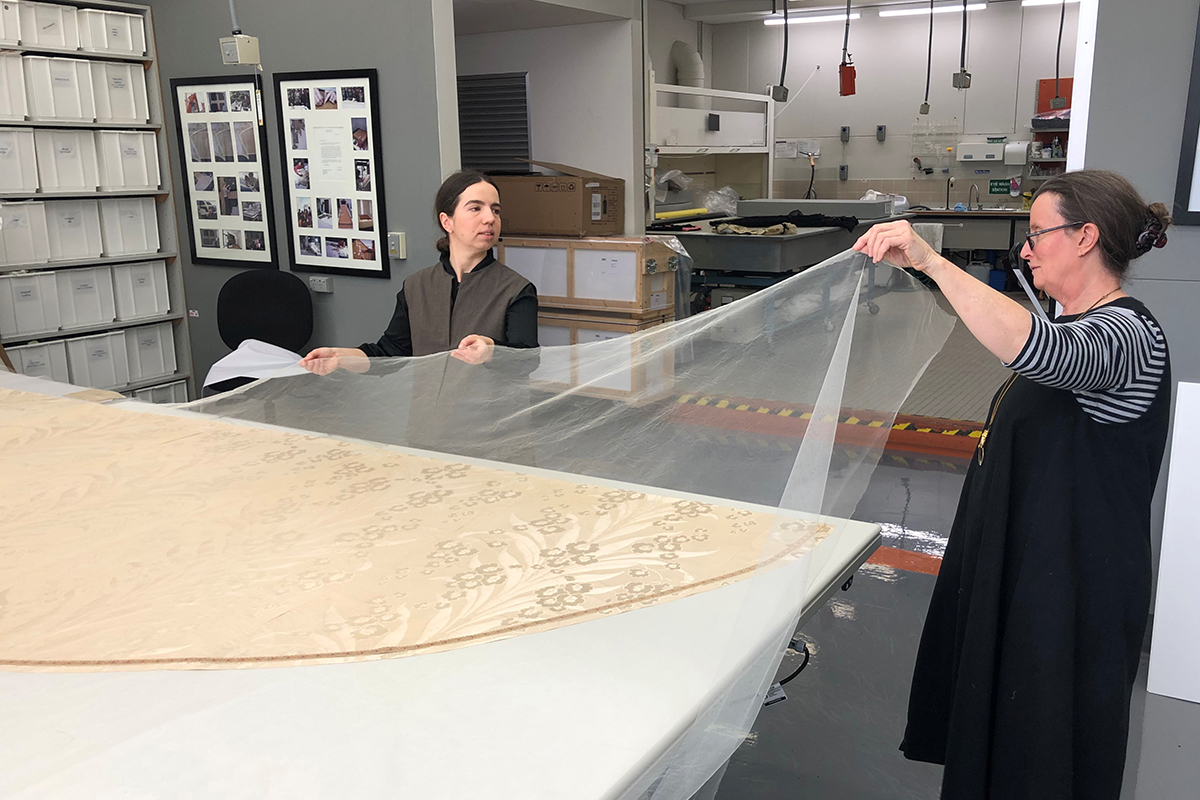 Victoria Thomas and Kristin Phillips, Senior Textiles Conservator, applying the net overlay.
Victoria Thomas and Kristin Phillips, Senior Textiles Conservator, applying the net overlay.
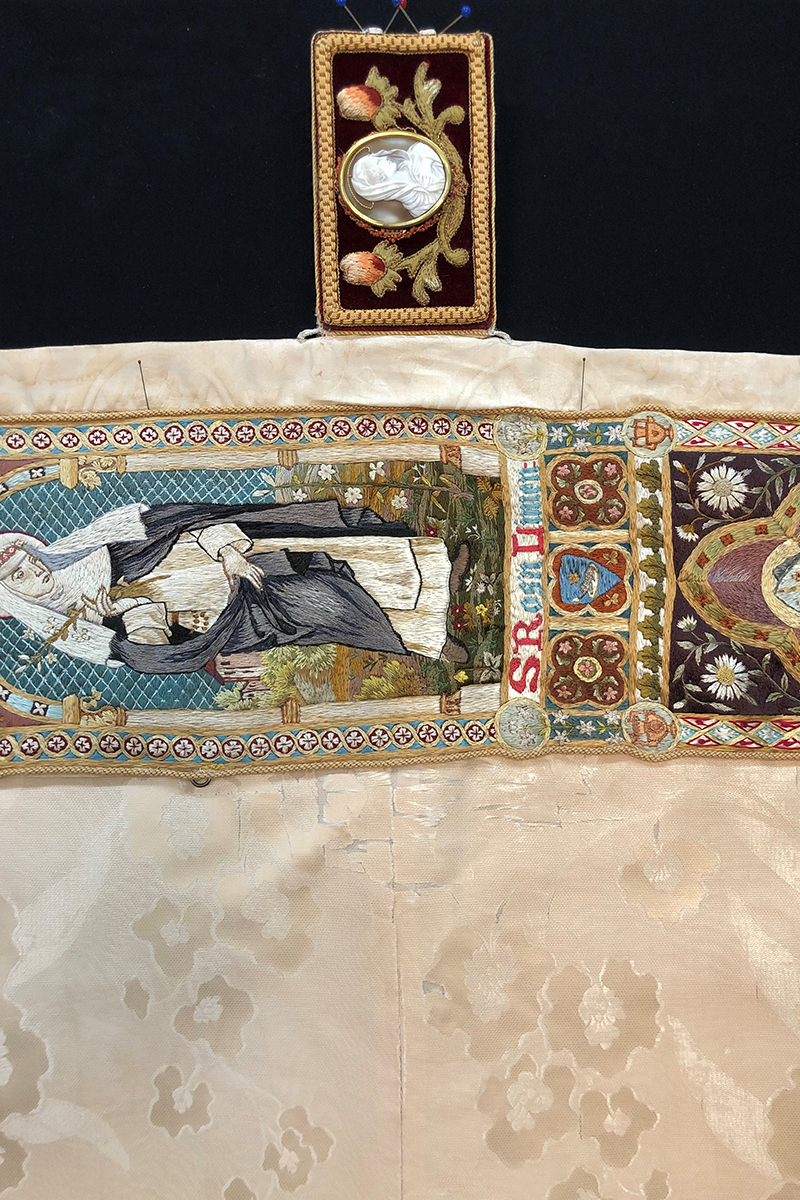 Image above and below: detail of embroidered section after conservation treatment.
Image above and below: detail of embroidered section after conservation treatment.
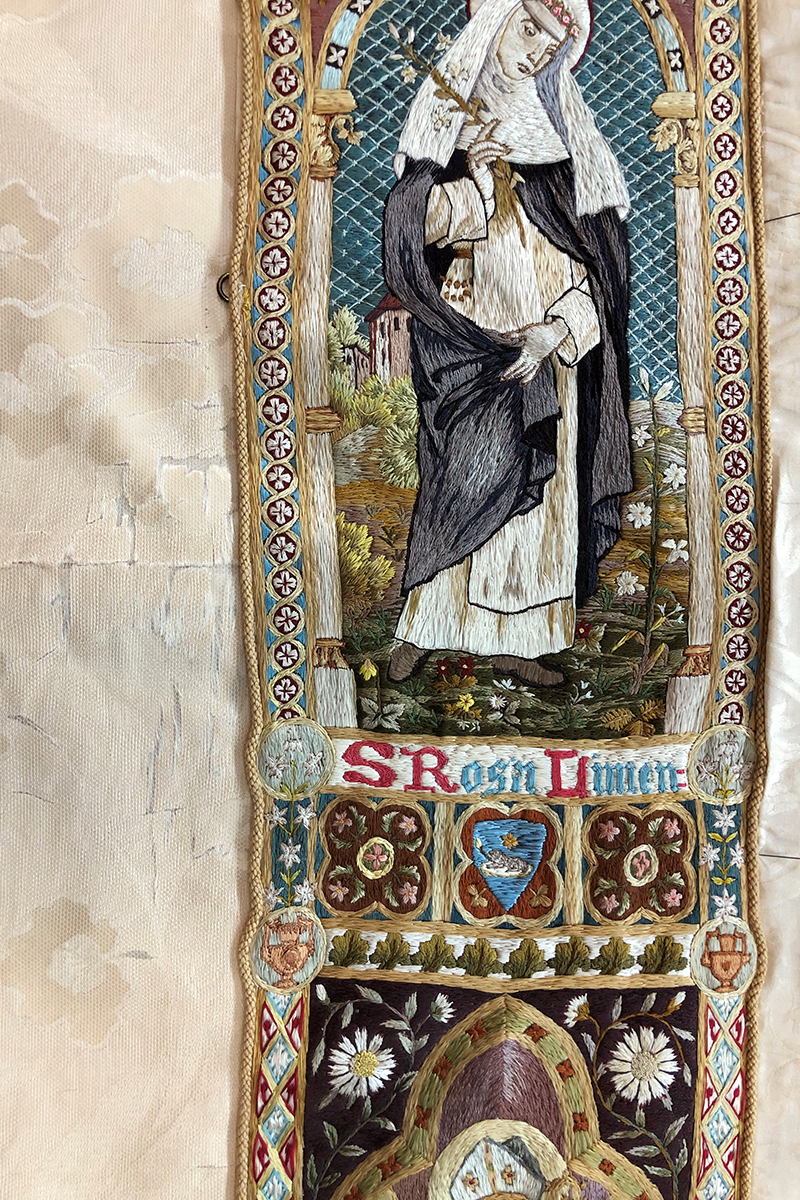
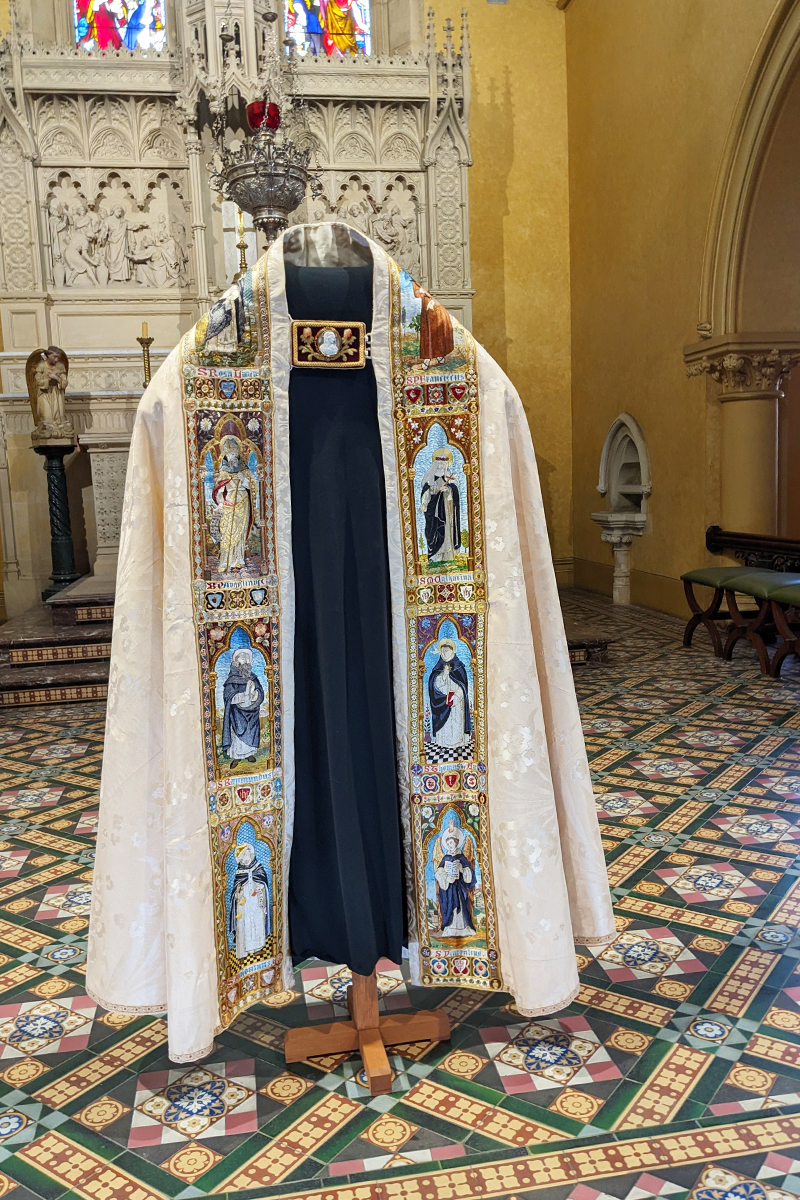 The cope on display after treatment in the Museum at St Dominic’s Priory College, North Adelaide, South Australia.
The cope on display after treatment in the Museum at St Dominic’s Priory College, North Adelaide, South Australia.


